articles
China Elevator Stories
Fuxinghao Bullet Trains, a Remarkable Feat of Chinese Engineering
I recently took a Fuxinghao bullet train and was impressed by the quality of these trains.
04/04/2025

Ruth Silbermayr
Author
I have taken a lot of trains in the past. When I was an adolescent, I took a train to school. I also frequently traveled by train to visit family in Upper Austria while studying in Vienna, a journey that took around two hours (these days, it’s more like 1.5 hours). In Austria, taking the train is very simple: you go to the station, buy a ticket, and hop on the next train. Train tickets were rarely sold out, and we could almost always get one just by showing up at the station. Only on rare occasions, like around Christmas, would tickets be completely booked.
But that wasn’t the norm, even during the holidays. Out of the hundreds of train rides I took, I can only remember one or two times when I couldn’t buy a spontaneous ticket and board the next train to Upper Austria—one of which was at Christmas.
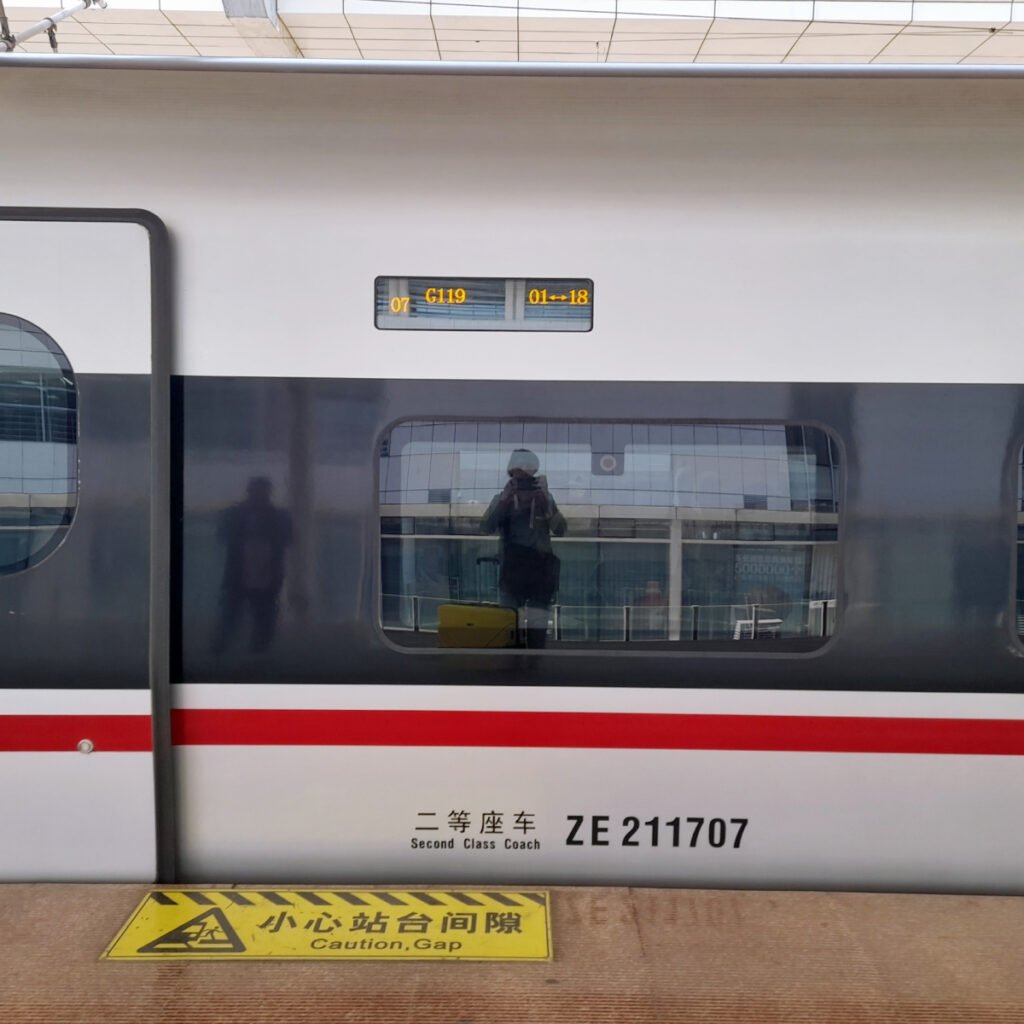
In my teens, I once traveled to Rome with my mother and oldest sister—those are the kinds of trips where we’d book tickets in advance. I’ve also taken trains to and from Germany, including the German ICE. I remember one trip in particular, when I visited my oldest sister who lives in Germany with her (Austrian) husband and son. Austria had different types of trains, but the ICE felt like a special one—it stood out as a bit newer compared to the Austrian ones.
After my ex-husband and I got married, we traveled across Europe by train for our honeymoon, visiting cities like Venice, Munich, Amsterdam, and Prague. At one point, we were stuck on a train in the Czech Republic for several hours due to flooding—much of Central Europe was experiencing torrential rain and high water levels at the time. I had booked our tickets in advance, which is generally recommended when traveling long distances in Europe. Some of our routes had to be changed because of the floods, but overall, the trip was smooth. We took both regular trains and sleeper trains.
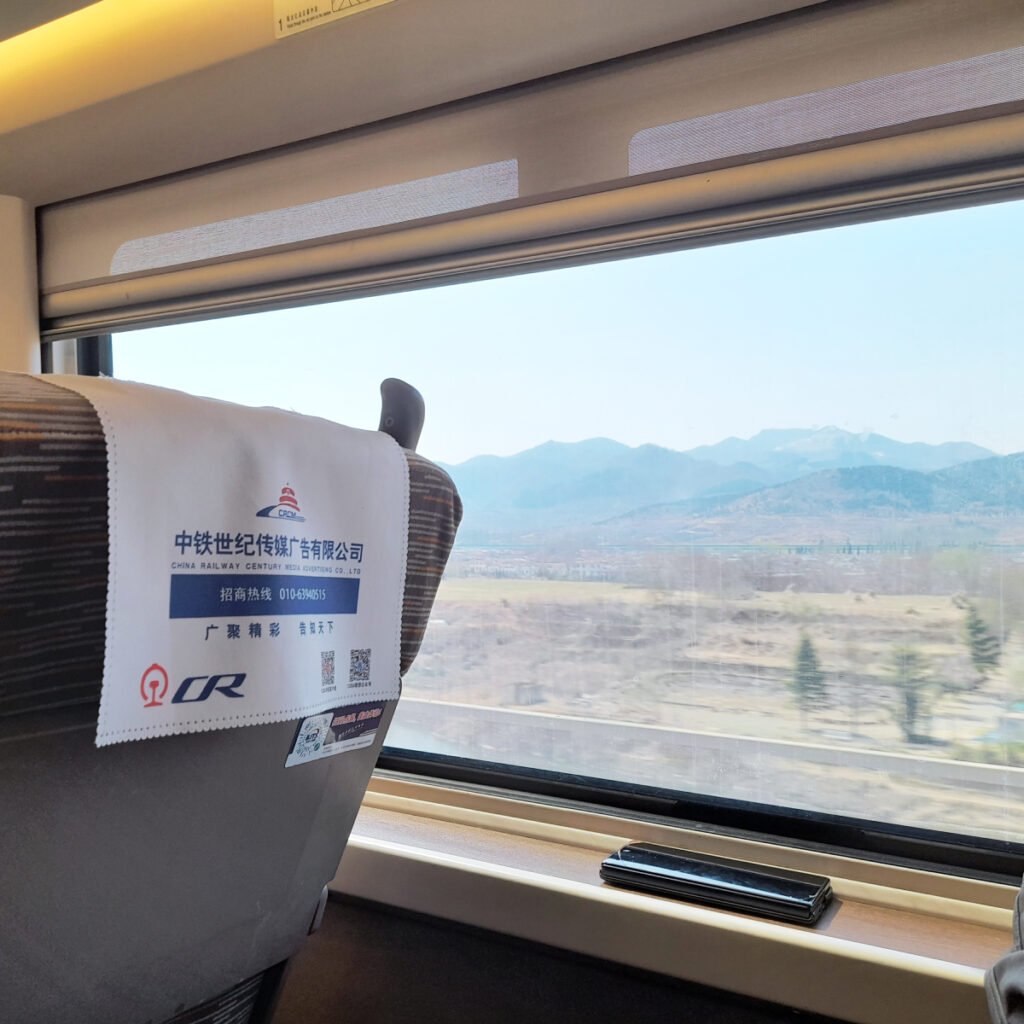
So, I’ve experienced all kinds of trains—but I had never taken a train in China, which turned out to be a very different experience, until 2009.
Over the years, I’ve ridden Austrian, Czech, French, German, Hungarian, and Italian trains—and now, I’ve taken many Chinese trains too. The Fuxinghao bullet trains are, without a doubt, the best trains I have ever been on. I’d even say they’re absolutely perfect—so perfect, I wouldn’t change a single thing. They left a lasting impression on me.
Before boarding, I didn’t expect anything too remarkable. I had bought tickets on Ctrip and picked up a printed QR code at the train station. The woman at the ticket booth told me I could just use my passport to board, but I didn’t want to take any chances, not knowing if a printed ticket might still be required—as it used to be in the past. In the end, I believe the printed ticket was required.
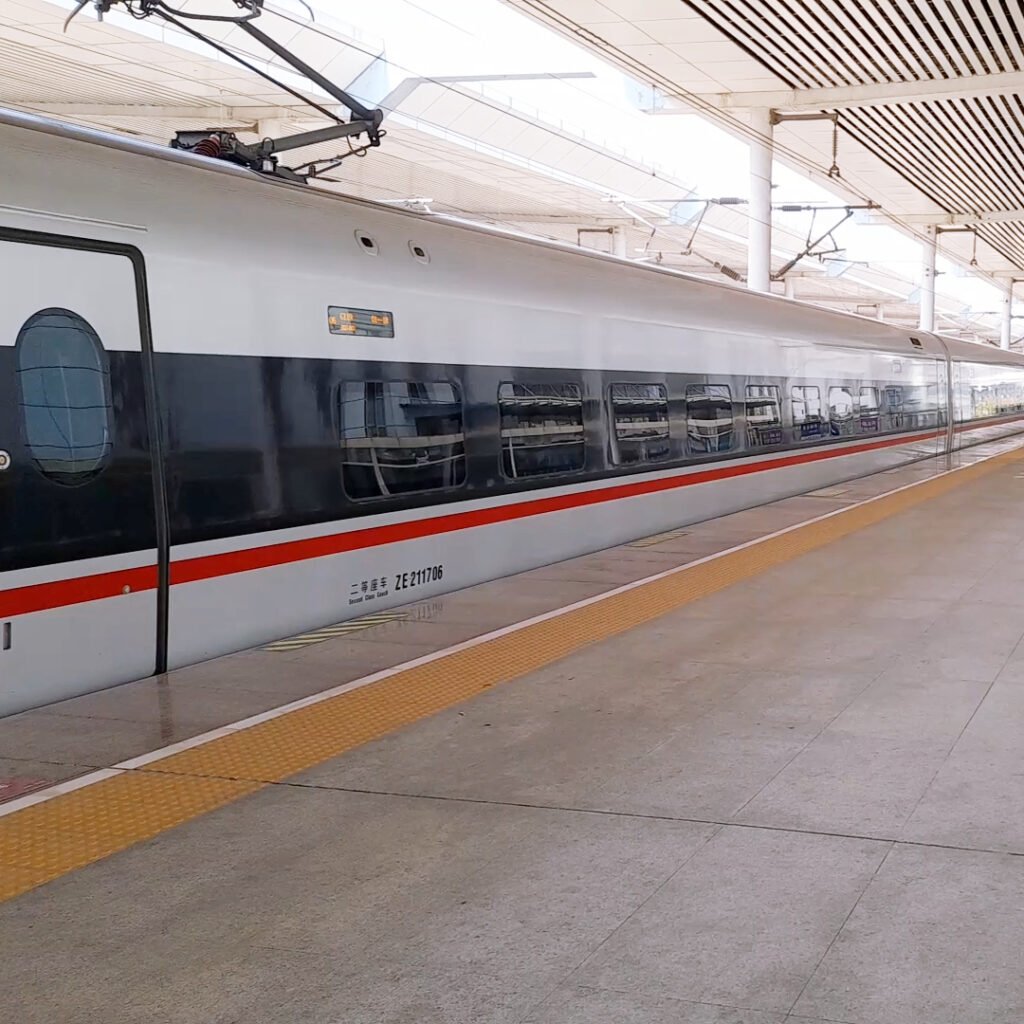
When the train rolled into the station, I still wasn’t expecting much. It was silver and red and displayed the characters 复兴号 (Fuxinghao), a type of train I hadn’t seen before (or don’t remember having seen before). I was used to an older generation of high-speed trains called 和谐号 (Hexiehao, 和谐 meaning harmony), while 复兴 means rejuvenation, renaissance, revival, or resurrection. But once I got on—wow, was I impressed! It felt like business class, not economy!
The entry is level with the train platform, so luggage does not have to be carried up any steps into the train.
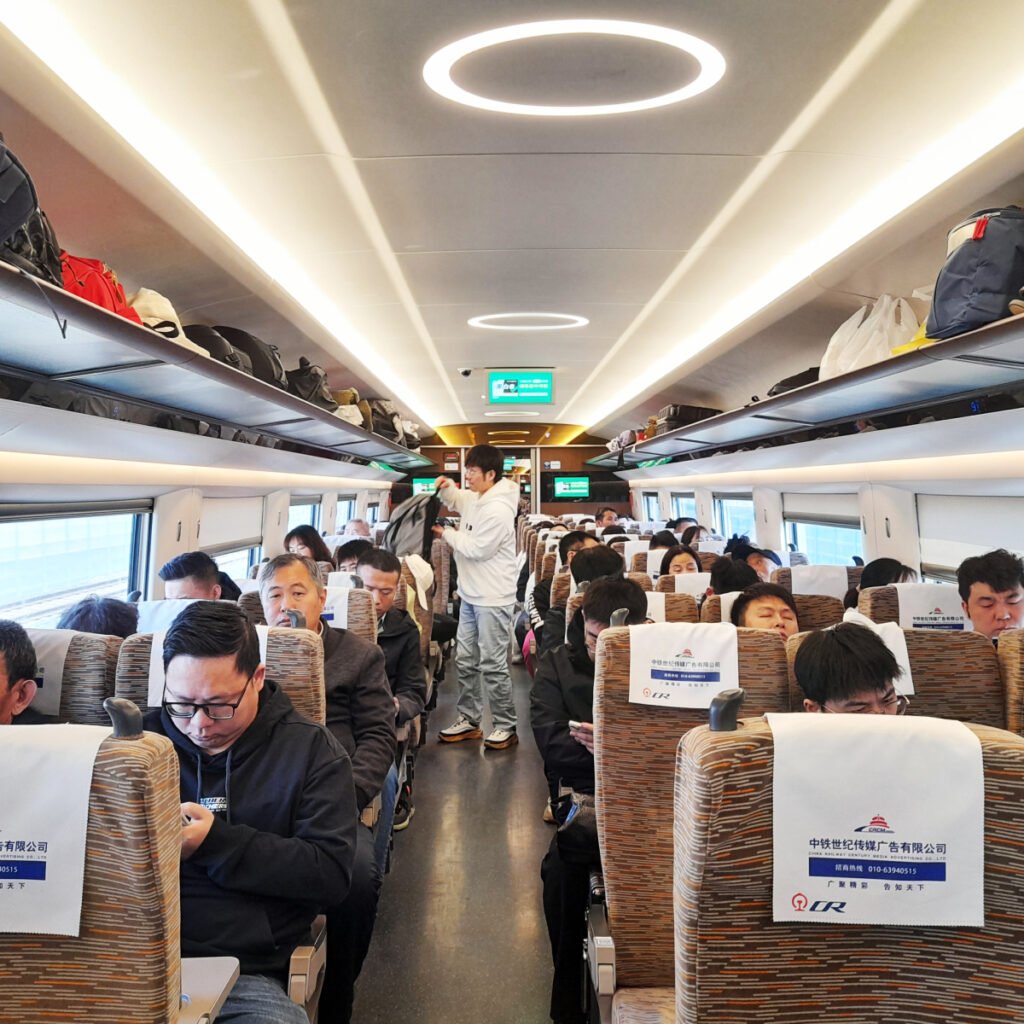
The seats were incredibly comfortable, and I really liked the calming color scheme—it was very easy on the eyes and made it easy to relax or fall asleep. Even though these trains are loud when they pass through stations at high speed (when they don’t stop), the interior is surprisingly quiet.
According to Wikipedia,
Fuxing (simplified Chinese: 复兴号; traditional Chinese: 復興號; pinyin: Fùxīng Hào; lit. ‘Rejuvenation’), also known as the CR series EMU (or as the Fuxing Hao), is a series of high-speed and higher-speed EMU trains operated by China Railway High-speed (CRH) and developed by CRRC. They are the first successful high-speed trains to be fully designed and manufactured in China. (…)
On 18 November 2015, the China Standardized EMU hit a speed of 385 km/h (240 mph) and passed the high speed test on Datong–Xi’an Passenger Railway. The EMU was tested under complicated conditions, including on bridges, in tunnels, and on slopes and turns. (…)
The train I took was the CR400AF Fuxing model. According to Wikipedia,
The CR400AF Fuxing (Chinese: 复兴号; pinyin: Fùxīng Hào) is a Chinese electric high-speed train developed by CRRC Changchun Railway Vehicles and manufactured by CRRC Qingdao Sifang. As part of the China Standardized EMU, the CR400AF is designed to operate at a cruise speed of 350 km/h (217 mph) and a maximum speed of 420 km/h (261 mph) in commercial service. Development on the project started in 2012, and the design plan was finished in September 2014. The first EMU rolled off the production line on 30 June 2015. The series received its current designation of Fuxing in June 2017, with the nickname Red Dragon. It is among the world’s fastest conventional high-speed trains in regular service, with an operating speed of 350 km/h (217 mph).
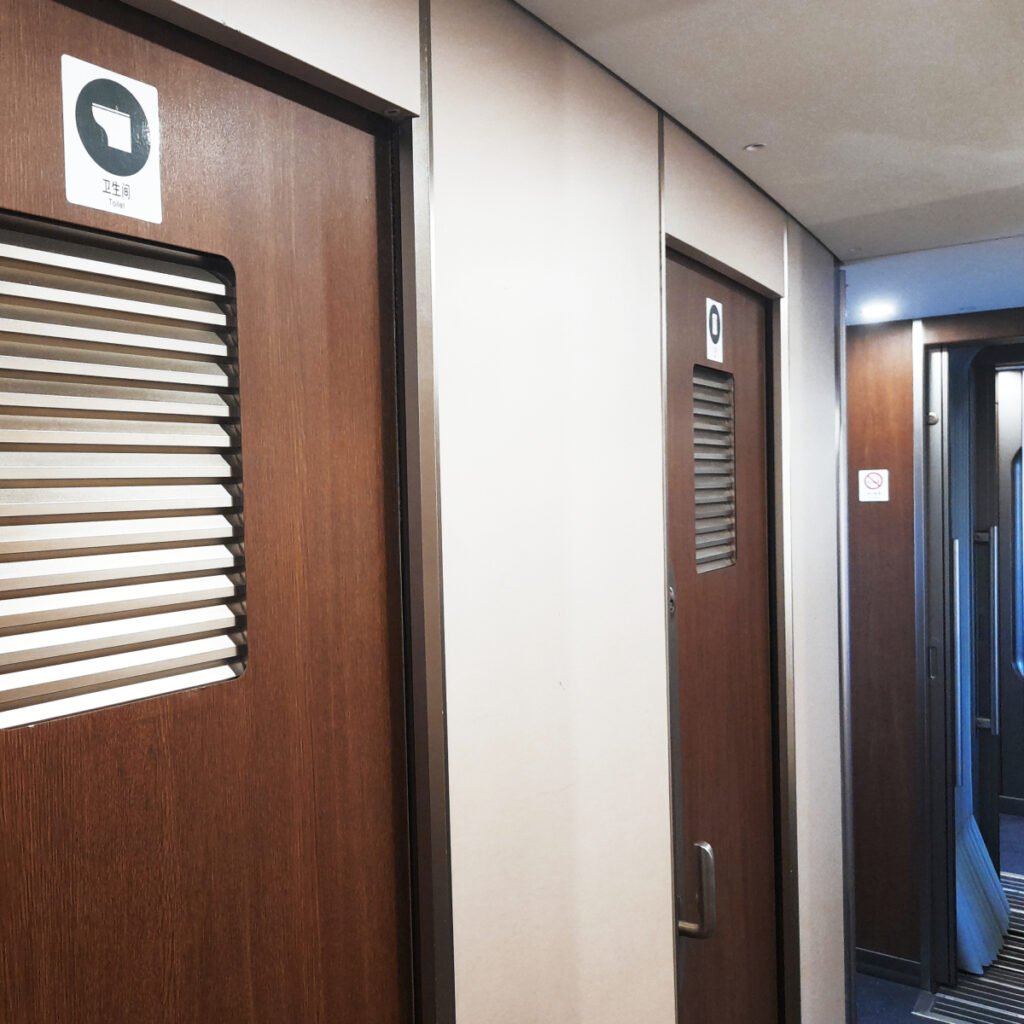
Each train car has two types of toilets: one Chinese-style squat toilet and one Western-style sit-down toilet. They even had toilet paper—which you won’t always find on older sleeper trains in China. There were also clean and modern washbasins opposite the toilets.

There’s plenty of luggage space: large suitcases can be stored near the doors, while smaller suitcases and backpacks can go in the overhead racks, just like on an airplane.
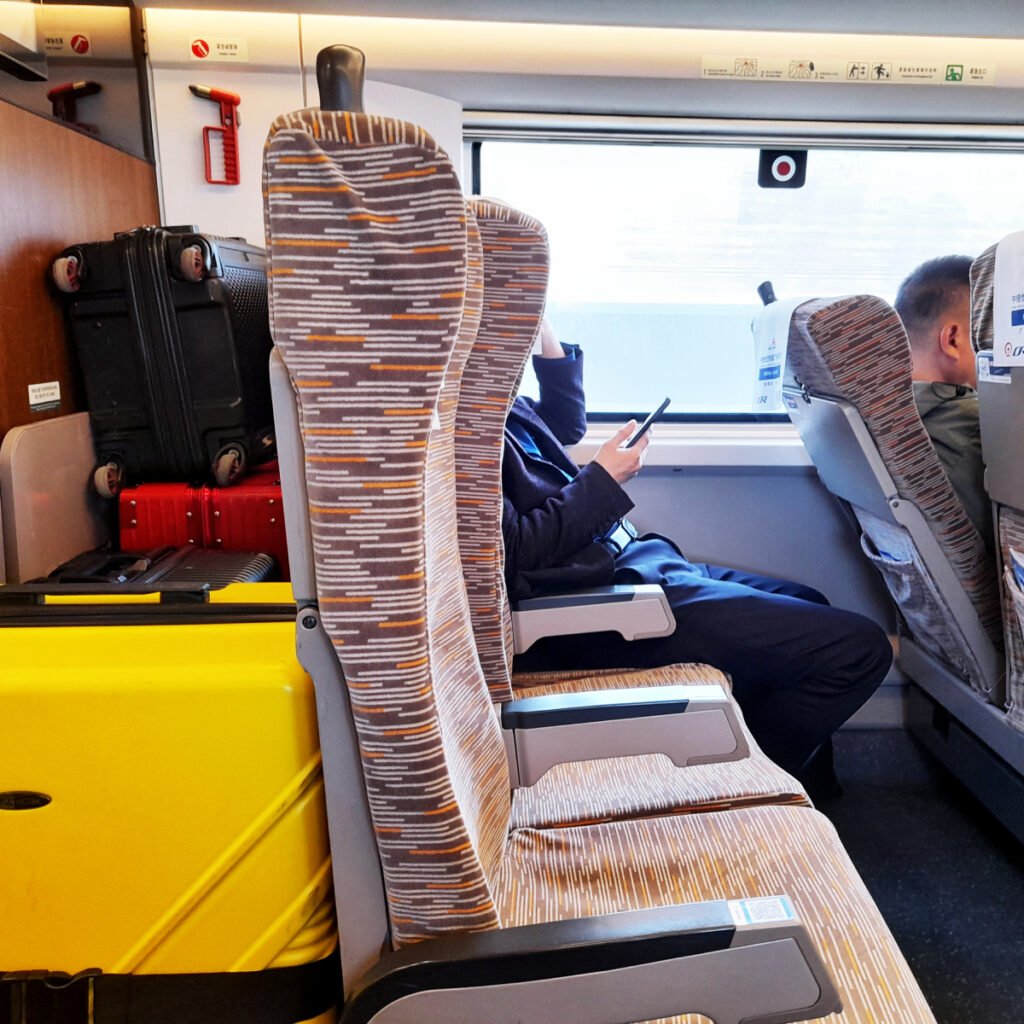
I’ve taken other high-speed trains in China where the ride didn’t feel as smooth, and the speed made the journey slightly less comfortable. But the Fuxinghao train was completely different—you couldn’t even feel how fast it was going. The ride was incredibly smooth and gentle. (Ah, the things you notice when you’re amazed by the brilliance of Chinese engineering!)
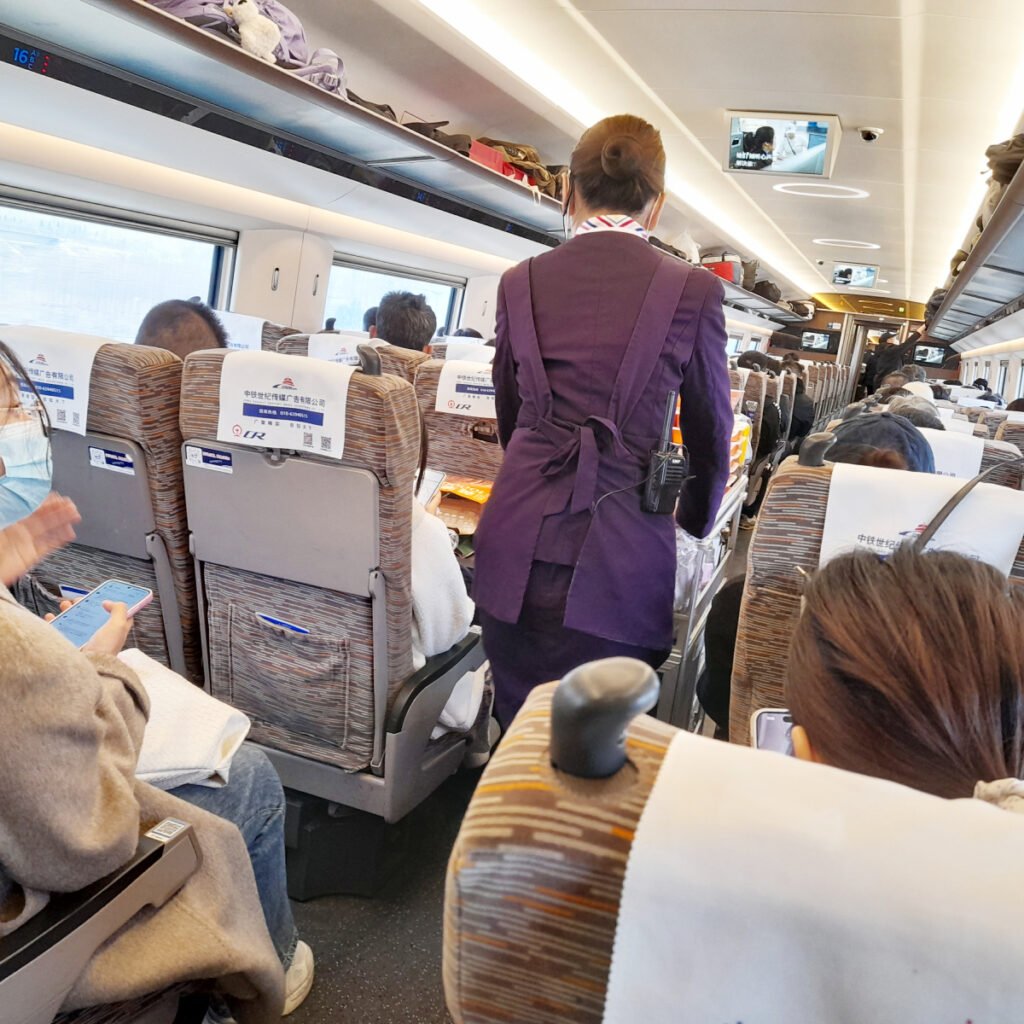
Like other long-distance trains in China, it had a trolley service selling food—including hot meals—and drinks. I didn’t see a full dining car or go to other compartments since the ride was short, but I imagine there might be one on the train.
The ride was so enjoyable that I didn’t want to get off after only 17 minutes. I would’ve gladly stayed on board for a few more hours—it was such a great experience.
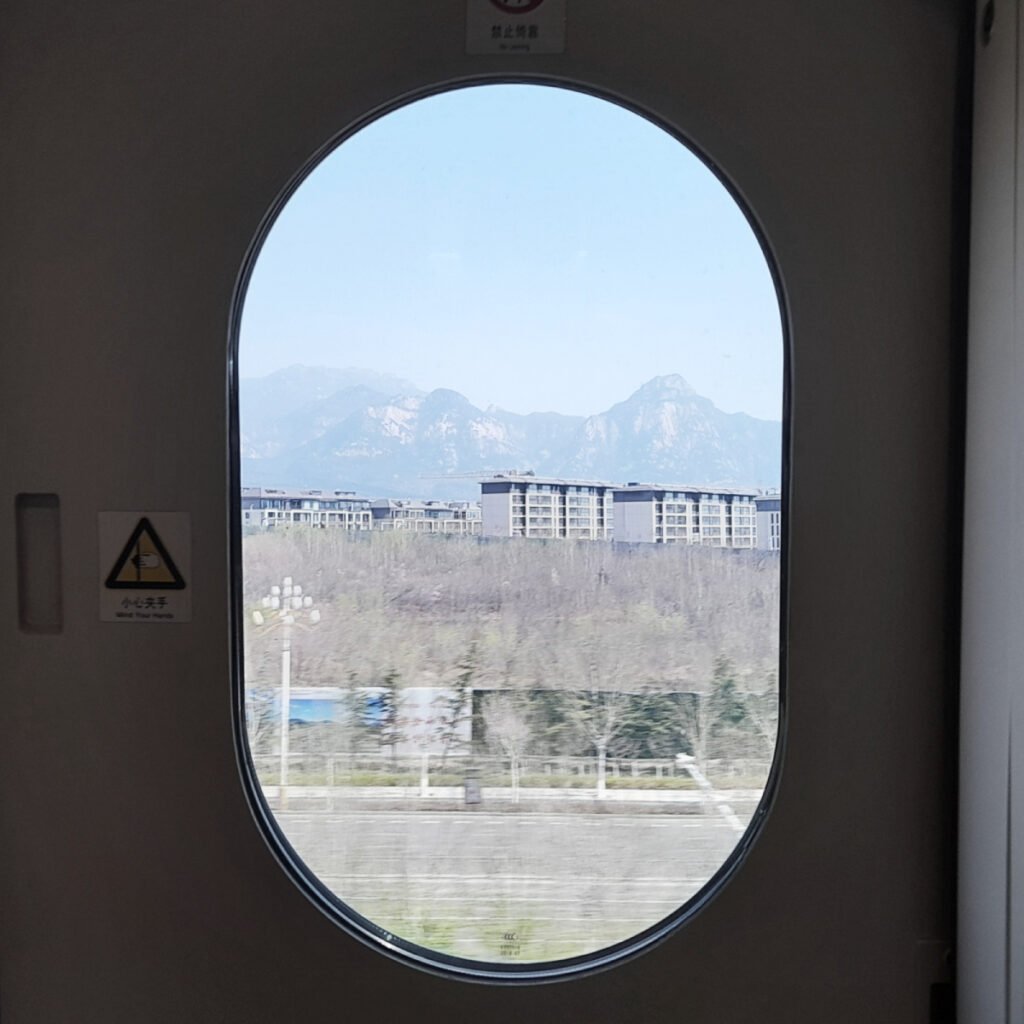
Now, if you’re wondering whether I was paid to advertise for the train company—I wasn’t! I’m not being paid by anyone to write articles; I simply thought the trains were a masterpiece of Chinese engineering and that this information might be valuable for others wanting to take a train in China.
Have you ever taken a bullet train in China?
Hi, i think that i saw you visited my blog thus i came to “return the favor”.I am trying to find things to improve my site!I suppose its ok to use a few of your ideas!!
Thanks for stopping by.
wonderful post, very informative. I wonder why the other specialists of this sector don’t notice this. You should continue your writing. I am confident, you have a huge readers’ base already!
Thank you!
You have remarked very interesting points! ps nice website . “Become addicted to constant and never-ending self improvement.” by Anthony D’Angelo.
Thanks!